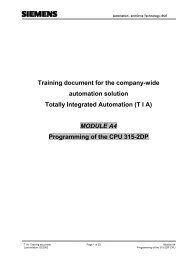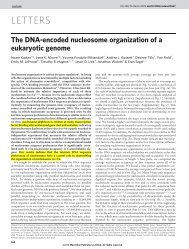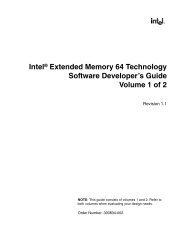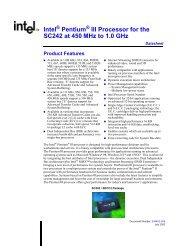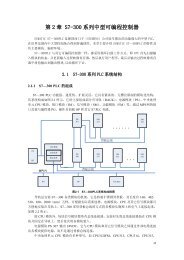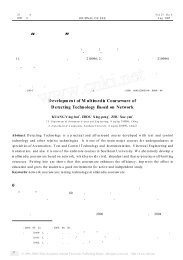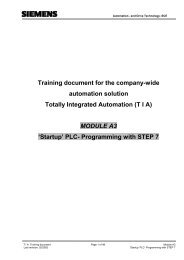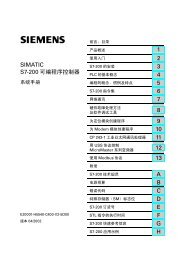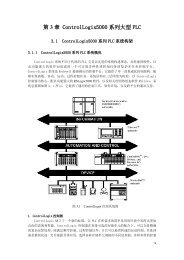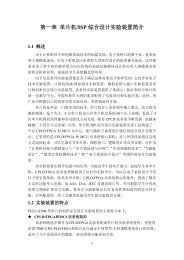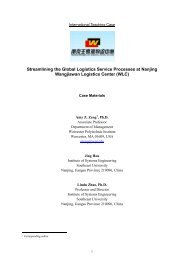Intel® 865G/865GV Chipset Datasheet - download.intel.nl - Intel
Intel® 865G/865GV Chipset Datasheet - download.intel.nl - Intel
Intel® 865G/865GV Chipset Datasheet - download.intel.nl - Intel
Create successful ePaper yourself
Turn your PDF publications into a flip-book with our unique Google optimized e-Paper software.
Functional DescriptionDepth BufferThe Raster Engine is able to read and write from this buffer and use the data in per fragmentoperations that determine whether resultant color and depth value of the pixel for the fragment areto be updated or not.Typical applications for entertainment or visual simulations with exterior scenes require far/nearratios of 1000 to 10000. At 1000, 98% of the range is spent on the first 2% of the depth. This cancause hidden surface artifacts in distant objects, especially when using 16-bit depth buffers. A24-bit Z-buffer provides 16 million Z-values as opposed to o<strong>nl</strong>y 64 K with a 16-bit Z-buffer. Withlower Z-resolution, two distant overlapping objects may be assigned the same Z-value. As a result,the rendering hardware may have a problem resolving the order of the objects, and the object in theback may appear through the object in the front.By contrast, when w (or eye-relative z) is used, the buffer bits can be more eve<strong>nl</strong>y allocatedbetween the near and far clip planes in world space. The key benefit is that the ratio of far and nearis no longer an issue, allowing applications to support a maximum range of miles, yet still getreasonably accurate depth buffering within inches of the eye point.The GMCH supports a flexible format for the floating-point W buffer, wherein the number ofexponent bits is programmable. This allows the driver to determine variable precision as a functionof the dynamic range of the W (screen-space Z) parameter.The selection of depth buffer size is relatively independent of the color buffer. A 16-bit Z/W or24-bit Z/W buffer can be selected with a 16-bit color buffer. Z buffer is not supported in 8-bitmode.Stencil BufferThe Raster Engine provides 8-bit stencil buffer storage in 32-bit mode and the ability to performstencil testing. Stencil testing controls 3D drawing on a per pixel basis, conditionally eliminating apixel on the outcome of a comparison between a stencil reference value and the value in the stencilbuffer at the location of the source pixel being processed. They are typically used in multipassalgorithms to achieve special effects (e.g., decals, outlining, shadows, and constructive solidgeometry rendering).Projective TexturesThe GMCH supports two, simultaneous projective textures at full rate processing, and four texturesat half rate. These textures require three floating point texture coordinates to be included in theFVF format. Projective textures enable special effects (e.g., projecting spot light textures obliquelyonto walls, etc.).<strong>Intel</strong> ® 82<strong>865G</strong>/82<strong>865G</strong>V GMCH <strong>Datasheet</strong> 171



